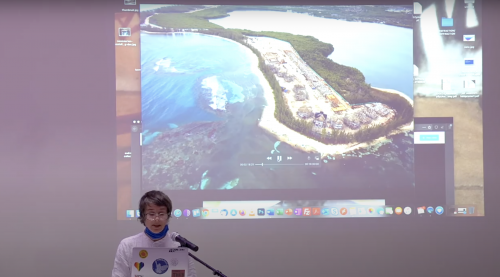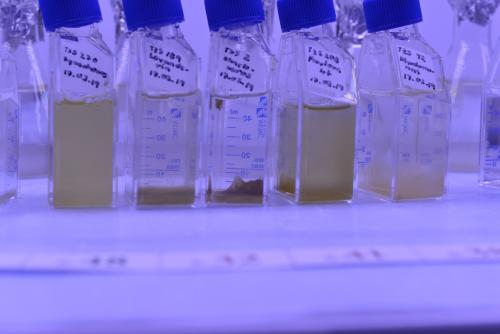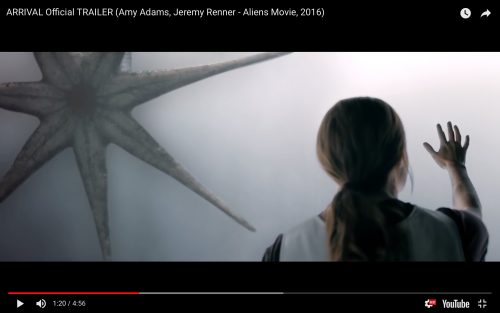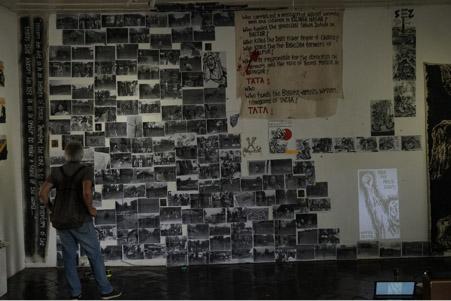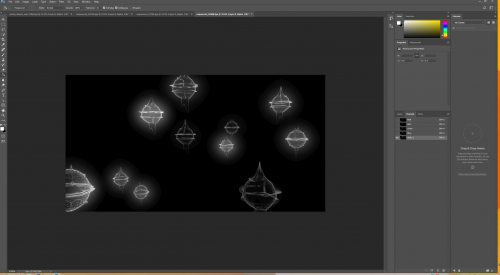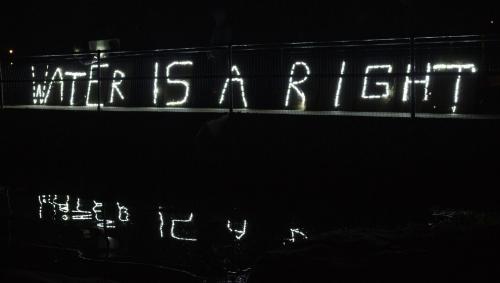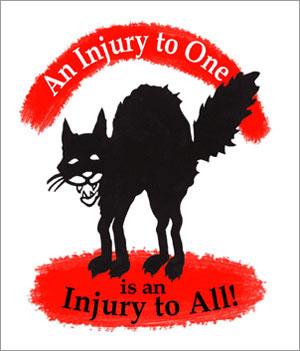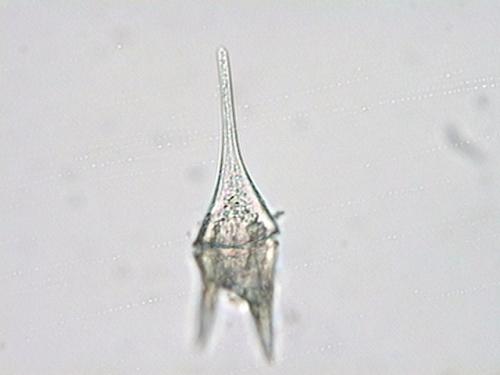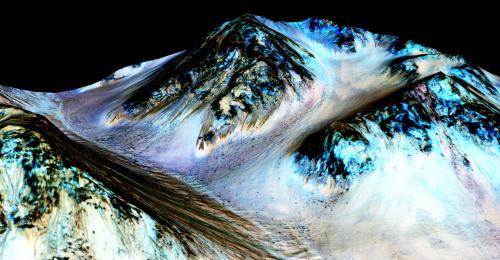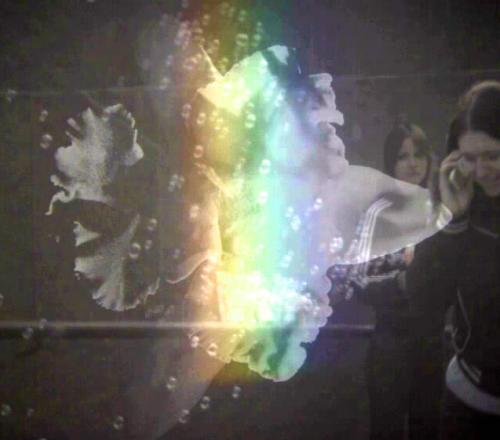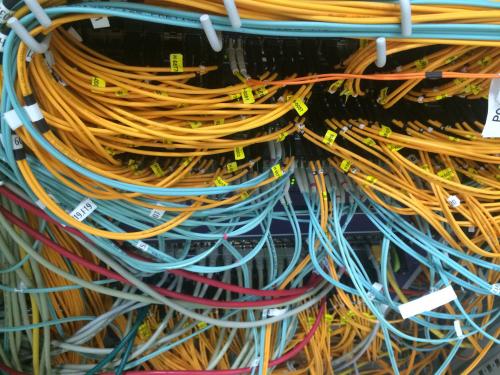SMW: With your book The Philosophy of Matter [1], like the collection a cartography of positions in materialism[2] a few years ago, many artists connect and see crucial concepts of our contemporary challenges written about with a profound base and speculative necessity and valuing the power of imagination. One of them is your distinction and differentiation of the “undercurrents” that has completely immersed me. It is not only a careful look at the massive western and modern influence of Cartesianism with lets say its collateral damage but also an opening towards Spinoza. In my artistic research the currents have a central space, they make this planet run: they are the dynamics in air and water directed by cosmological forces.
RD: Thank you for your kind words, and of course I hope that the concepts that are developed in this meditation are valuable to makers and thinkers, and that they, somehow, resonate with your art practices. You are referring to the first part of the book (and maybe the second) in which the undercurrent is at stake. It is a concept that allows me to capture the many forces that are at work in the here and now, but that for some reason, do not, or cannot, reveal themselves… And as the word undercurrent already tells us; these are very powerful, invisible forces. My claim is that the religious, humanist and capitalist realities that dominate the present, have been given form by those who interpreted the work of René Descartes. It's good to be very clear about this: I don’t think anyone of them ever agreed with Descartes, rather, I believe that Descartes’ Discourse actually functioned as the ‘bildungsroman of the bourgeois’, as Antonio Negri once put it[3]. By means of ‘critique’ they have been very successful in setting up the oppositions and the hierarchies through which society would be organized (male versus female, man versus animal, nature versus culture, etc.). Thus, through the critical method, a narrative was set up that made use of terms like rationality, progress and humane, but which in the end was a quite shortsighted political agenda. Thus, Cartesianism, or Modernity, completely neglects the vitalist undercurrents and becomes responsible for the many crises that we find ourselves in today. As you rightfully point out, I start reading Descartes in relation to Spinoza, his contemporary, who instead offers us a philosophy, a geophilosophy even, that does not start from the (privileged) human being, but analyses the relations in which we, and everything else around us, are entangled: relations of embodiment and relations of thought, that in their entanglement, give rise to life as we know it. Spinoza, is then the archetypical example of a materialist thinker, who, unlike the transcendental Cartesians, opens our eyes to what we have been blind to for so long. This concerns a thinking that includes the unforeseeable, that asks us to ‘become a target’ even, if we want to understand the matters of life. A raw and untamed form of thinking that I think is concerned with the essential matters of makers and thinkers of today.
SMW: What I find particularly interesting is the new forms of material and spinozist thinking, not in the form of progress of tech fixes but in the violence experienced and the necropolitics in the back. Thus being more real and accurate to the experience of today's violence. To counterbalance the strings and still deadly strings of binaries coming out of Descartes not only the material but also the elemental and more subtle experiences in analysis can be useful. I also see much of the entanglements of art activism and ethics coming into focus. At the same time acknowledging "the wound" and the underlying dynamics thus the undercurrents allows us to avoid the neoliberal all swelling ways of much contemporary art and culture. We are facing too much of greenwashing, whitewashing and so on…. repeating patterns of structural violence. So concepts and structures of alliance are needed in constantly shaping senses and analysis of the dynamics.
RD: Yes, the concepts I develop throughout this meditations should be seen as tools that can help us map the crises in which we find ourselves. The wound in particular, can be helpful imagining how pain connects us, and should always be our matter of concern. The wound, I believe, is not personal, and is surely not always visible. It has the power to crack the earth and us, but also to uncover new grounds, new forms of relating, new lives. Fascism, the wound that traverses through Europe as a whole, and that has been so fundamental to its political system, is maybe the best example of how wounds can tear up a whole continent, yet also allow for new forms of living together. In our times, the ecological crisis, somehow connected to fascism of course, is proving itself to be even more complex and far reaching…
When it comes to woundedness (and to living the non-fascist life), a great inspiration for me has been the life of Joë Bousquet. Paralyzed in the Great War, he became a poet thanks to his wound. “My wound was there before me, I was born to embody it”, he states[4] It perfectly summarizes the affirmative approach that I am also searching for in this book. The world is broken. Every heart is broken. We have to embrace the cracks and the wounds that mark us. We have to search, jointly, for the life these cracks and wounds have to offer to us. This is what Bousquet also means when he tells us to live our wounds beautifully. It’s the best lesson in ethics one can get.
SMW: As in Pandoras Box, my line of conversations (online and in the book form), where aesthetic solidarity is the focus: its power, dynamics and affects as well as effects: a practical redefining, a lot reverberates in the spinozist thinking you are writing about. With the earth and with geology rather than ego we should aim for alliance. But that affords us seeing being too limited by the ego first. But that depends on us first realizing that we’re being too limited by the ego.
In A Philosophy of Matter you refer to the glitch and unprecedented shifts also as being opened and becoming a target? Can you say a bit more about the inverse mechanism of complicity?
RD: Certainly, as this is such an important theme for me. It connects to many discussions regarding ‘otherness’ that have been crucial to contemporary thought since Levinas and Derrida. My problem is basically this… When Derrida speaks of ‘opening oneself up to the other’, he says he is ‘opening his door’ to invite the other in[5]. This may seem very generous, but I think it is not. I think this gesture is still thoroughly humanist, anthropocentric and perhaps even paternalist. Because it is the “I” who takes the initiative, who first recognizes this otherness (on his conditions), and decides to take action by opening this door that was closed before. By “becoming a target” I propose a very different politics. It concerns taking responsibility and a willingness to accept this radical openness. To seduce the outside forces and to be ready to undergo the most radical change. ‘Being opened by’ instead of ‘being open to’, is how Reza Negarestani captures this[6]. I consider this a very honest and caring type of politics. And I don’t think it's negative at all; it's about a readiness to be born anew.
I think the arts, in this sense, are actually far more interesting than the larger part of philosophy. Much more than philosophers, who, for long, have projected their idea upon the rest of the world, but refused to critique the self (the white, male, rational ideal), it has been the artist who has, for long, asked themselves “but what about me”?, and forced the visitors of their exhibitions and performances, to ask themselves this question too. I see this in the long history of self-portraits in Western art, but also in how the great masters, from Jeroen Bosch to Giotto, turned themselves into a target in their paintings, long before Velasquez.
If there is one way in which the arts have truly ‘progressed’, it is in how it increasingly has been able to make all of us become a target. And this happens particularly, in how contemporary art is nowadays involved in ecological matters.
SMW: As this is also more the focus in the second part of the book and that’s why I like the glitch more than the crack, it's what the glitch matters to.
It can be a possibility and a constructive path, an embankment in geo-materiality and geo-philosophy?
The always in motion particles assembling in ethics and imagination? Or is that too rough in a shift? But what I am interested in is where there is a necessary connection to responsibility and a “beyond the ego” not only as a subjectivity but as a tool? And yes that as you state is situated in Staying with the Trouble[7] and intra- action (Haraway, Barad and I would also add Braidotti) but we also see how that is constantly undermined. You name the example of it not being enough to be antifascist today, and I would turn this around and maybe say that as solidarity is used by the super far right, the constant reboot has to also acknowledge that an antifascist practice is exactly analyzing the fascist in the “I” and refining and tuning the anti fascist and anti colonial practice in accordance to the poison, patterns and smartness of the superbug (Keller Easterling) today. And even if I agree that these terms are not so useful I still don’t know what else to say for anti colonial and anti fascist practices. But maybe that is a loop back to inverse complicity or implicancy to use Denise Ferreira da Silva´s[8] term?
RD: All the concepts central to this book (we discussed some of them above) are aiming at an ethics, where it is not just simply about ‘critiquing’ the rest of the world (we left the idea of crique in the first pages of this book already, when we moved away from Descartes (and the Dartesians, those who keep critical thinking alive up till today). No to critique thus, but yes to an affirmative engagement, and a taking up of responsibility. I am convinced that ‘becoming a target’ is essential for that as it demands us to start by putting ourselves, our humanist, anthropocentric, patriarchal selves at stake. In the second part of the book I engage with theory (from physics to architecture, to feminist and postcolonial matters) but also to the arts (performance and dance, architecture again, and, as always, fiction writing). Within all of these fields I keep asking the key Spinozist question: we don’t know yet what the body can do. So yes, let all bodies become a target, and let's see, with academics and with artists, how we need to radically rethink the body and its engagement with the world.
The work by Ferreira da Silva is doing that exactly: starting from the relations between the different peoples and the waters that (I am referring in particular to her film 4 Waters: Deep Implicancy)[9] she explores how we can jointly traverse the wounds (of colonialism, of racism) that had separated us for song long. Finding harmony in accepting the wounds that mark us (and that will not heal). Performance art, and dance, as I also note in the book, are important to living these wounds beautifully, to explore, with our bodies, how our joint woundedness can be lived. And of course this is an ongoing exercise. Obviously it’s the ongoingness that matters.
SMW: Ongoing is sometimes difficult but also is a performance in habitat/inhabited?. And it's so appropriate to look especially into the performing arts as you do, in a way as there time and space time is another dimension even the 4th (maybe rephrase this? you need some commas) and was one of the reasons why we are working on the opera for example to get away from the “I “ and have an opera that one needs to experience each time from another condition of a body and a situated body. Also as you state the ongoingness which is difficult sometimes, to keep relations in their intensity and maybe also accept ongoingness with that woundedness. So very much appreciated that you actually call and write so poetically philosophical that as a woundedness (rephrase?). The way I have been reading it, it's a physical fleshy wound as well as what can be understood as ‘slow violence’ Rob Nixon[10] and systemic patterns of wound making. Could you say a bit more about the relation to violence in that?
RD: I like your emphasis on ‘ongoingness’ a lot, how you talk about this here, and how you worked with it in your installation “Planetary Opera In Three Acts, Divided By The Currents” (2018)[11] as I saw this at Empty Gallery in Hong Kong, when I was there. Your emphasis on marine ecosystems, especially the presence you give them with your work, only makes sense when you see (and hear) the ongoingness of these systems. Rob Nixon calls this slow violence and often emphasizes that victims in society are often unseen and unheard. Your work, among other things, shows how these wounds travel much further. I have great sympathy for Nixon’s work and his idea of ‘Slow violence’, especially because of the ongoingness he stresses. But I think the emphasis, in philosophy, and in art, has too often been on the violence itself whereas that, to me, is not the most important part. Or to put it more philosophically, to me this moment of violence (whether actual or virtual, fast or slow, major or minor), in the end, has always already happened. It's interesting for historians, but for those focusing on the contemporary, the wound is key. This is why woundedness is so important to me: I’m interested in what remains, goes on, and needs to be worked with.
SMW: Another dynamic I was tuned to is the special place you give to performance art. With our opera we were touching on some of the points you mention. And there is of course the layers and history of performance art that has developed into a huge horizon of multiplying practices from breathing with algae and horses to moon gazing. But you mostly describe staged performance?
RD: Actually, in this book I focus on not-too-many artworks and not-too-many philosophy books either. These are the works that ‘forced me to think’ during this project, but that says absolutely nothing
In general I can say that the contemporary arts are hugely inspiring when it comes to rethinking the earth, searching for a posthuman ethics and ‘living the wound’. I don’t see any difference between the research these artists do and the books we write as philosophers. I have had the pleasure of being involved in the Papay Gyro Nights festival which took place at a tiny island part of Orkney, north of Scotland. Set by Tsz Man Chan this festival brought together so many inspiring contemporary artists and thinkers (anthropologists, geologists)[12]. I remember a very interesting installation of Signe Liden[13] , who filled an old shed with pipes so we could hear the changing winds.
SMW: The geometer and embankments as well as geological formations have been driving some of my studios work in the last years and the geometer in your universe is also a special tool. In a maybe more poetic way of being in the wind or the currents, is an intimacy maybe before and on the very basis of being human or underneath.
From a planetary and a microscopic level the geometer is not only a measure. Would you explain a bit more?
RD: Spot on. The figure of the geometer for me is how I had to ‘situate’ as Haraway would call it, the knowledge that is this book. It's an old figure, Egyptian I’d say. Mythological even. The geometer represents the God Ma’at, the God(dess) of measure, of justice. Every year when the water of the Nile retreated and the fertile lands appeared, the geometer organized the land again, the farmland and the villages. Thinking about the earth and about the people, the geometer, for me, mediates between the earth and the people. And that is actually what the geo-philosopher should do…. Take up this negotiating role. I consider myself a posthuman scholar but, with my dear colleague Rosi Braidotti, that does not mean that I think we should get rid of humans or of the subject position altogether. But we should radically rethink what we are doing here on earth. That’s what I mean when I say we have to ‘become a target’. We should not defend human existence, we should enter the negotiations as open as possible.
I am sympathetic to Bruno Latour’s idea that we need a Parliament of Things[14] if we want to understand our earth better. I am even more sympathetic to many ways in which Michel Serres wrote about opening our eyes to the elements and the forces we have been blind to for so long[15]. For me, the geometer allowed me to do that. The cosmonaut and the virus, in response to you bringing up the planetary and the microscopic, would also be very valuable (and contemporary) ways of opening us up to a world we lost touch with.
SMW: May I add another passage to speak a bit about the undercurrents? In our arctic soundscape project especially but also in the opera and the drawing you saw in Empty gallery in Hong Kong 2018, the mantra like currents as simple illustrations of meteorological proxies were applied during the heavy storm where I experienced a point beyond the fear when the 18th floor was shaking and the storm did not allow you to cross the street. The impossibility of “riding” the storm as a skateboard or horse made me want to think of it as something that you can give yourself as a medium in the installation. Now investigating the biomass and relations of transformations of the planet and the currents in water and in the atmosphere in particular geological formations also affirms this. A cohabitation can still be very violent but a co-breathing and co-being in the currents not really as its within one other force. Could being with the undercurrents in a physical way even be a way for resilience?
RD: That’s a beautiful thought. I remember the typhoons in Hong Kong vividly. In my book I spend many pages on rereading Michel Tournier’s book Vendredi (Friday)[16]. A Robinsonade. Robinson, when arriving at the island, stays true to his religion, his capitalism, his values, and seems actually very successful, growing big harvests and all. But he feels that this is not the life the island wants him to live. And one day, as in a dream, he sees what he calls “another island”. It is an island more fraternal, more lively, more in harmony. So he gives up his worldly possessions and starts living the life the island wants him to live. Such a beautiful thought. It seems to resonate with your experience in Hong Kong and with the research you are involved in.
The end of Tournier’s book is dramatic though: he is saved, and the shipmates show him a recent newspaper with the date on it. He sees the date and at that moment he becomes an old man. That’s the wise lesson: never be saved!
......
Rick Dolphijn is a writer and a philosopher and publishes widely on continental philosophy, new materialism, posthumanism, the contemporary arts and material culture. He is an Associate Professor at Utrecht University, the Netherlands, and an Honorary Professor at the University of Hong Kong. With Rosi Braidotti he is working on an upcoming book about Deleuze and fascism.
Rick Dolphjin and Susanne M Winterling met for the first time at Sonic Acts 2019 where the planetary opera in three acts, divided by the currents was presented in a lecture and panel form invited by Rosi Braidotti and Rick Dolphjin. A dialogue, collaborations and seminars followed and spun the lines you are reading.
Footnotes
- ^ Rick Dolphijn, The Philosophy of Matter, 2021, The Philosophy of Matter is a journey in thinking through the material fate of the earth itself; its surfaces and undercurrrents, ecologies, environments and irreparable cracks.
- ^ Rick Dolphijn & Iris van der Tuin, ‘New Materialism: Interviews & Cartographies’, 2012
- ^ Antonio Negri, The Political Descartes: Reason, Ideology and the Bourgeois Project, 2007
- ^ Joë Bousquet, 1897-1950, french surrealist poet, https://schoolofmaterialistresearch.org/Cracks-Wounds-and-Becoming-a-Target-on-the-Philosophy-of-Matter
- ^ Jacques Derrida, 1930-2004, french philosopher, founder of “deconstruction,” a way of criticizing not only both literary and philosophical texts but also political institutions. https://plato.stanford.edu/entries/derrida/
- ^ Reza Negarestani (born 1977), Iranian philosopher and writer, known for "pioneering the genre of 'theory-fiction' with his book" Cyclonopedia which was published in 2008.
- ^ Donna J. Haraway, Staying with the Trouble - Making Kin in the Chthulucene, 2016
- ^ Denise Ferreira da Silva writes and researches about violence and ethical issues of the global present, using tools from critical legal theory as well as feminist, racial and postcolonial theorizing in a poetical-ethics. http://pandorasbox.susannewinterling.com/fractal-sensingthinking-planetary-scaleSee also book Unpayable debts which examines the relationships among coloniality, raciality, and global capital from a black feminist “poethical” perspective. Inspired by Octavia E. Butler's 1979 sci-fi novel Kindred, in which an African-American writer is transported back in time to the antebellum South to save her owner-ancestor, Unpayable Debt relates the notion of value to coloniality—both economic and ethical. Focusing on the philosophy behind value, Denise Ferreira da Silva exposes capital as the juridical architecture and ethical grammar of the world. Here, raciality—a symbol of coloniality—justifies deployments of total violence to enable expropriation and land extraction.
- ^ Denise Ferreira da Silva, 4 Waters-Deep Implicancy, 2018 see for example https://www.e-flux.com/video/351110/4-waters-deep-implicancy/
- ^ Rob Nixon, Slow Violence and the Environmentalism of the Poor, 2011
- ^ Susanne M. Winterling, gravitational currents & the life magic, 2018, Empty Galleryhttps://emptygallery.com/exhibitions/eg12_gravitational-currents-the-life-magic/https://susannewinterling.com/exhibition/gravitational-currents-the-life-magi/
- ^ http://www.papaygyronights.papawestray.org/
- ^ https://signeliden.com/
- ^ Bruno Latour (1947 – 2022) was a French philosopher, anthropologist and sociologist.
- ^ Michel Serres (1930 – 2019) was a French philosopher, theorist and writer
- ^ Michel Tournier, Vendredi ou les limbes du Pacifique, 1967
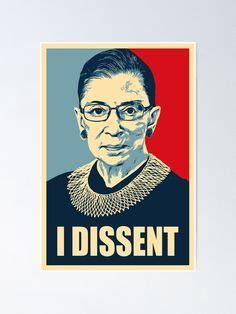
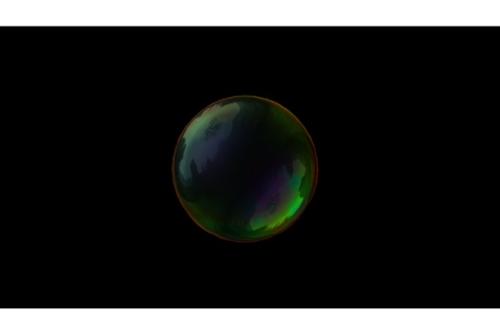
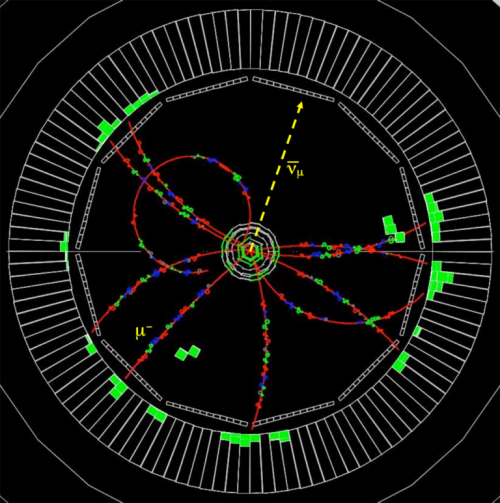
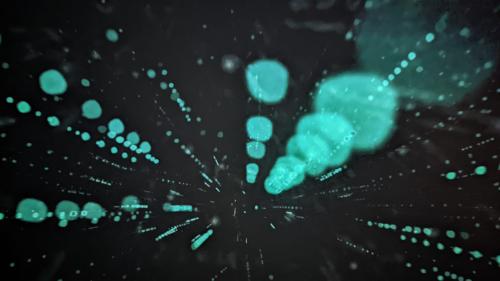

![Blackwash [working title]](/sites/default/files/styles/medium/public/56fe8ebf-7f16-4486-a251-6d85b1e906c3_4_5005_c.jpeg?itok=rIFeYRMo)
